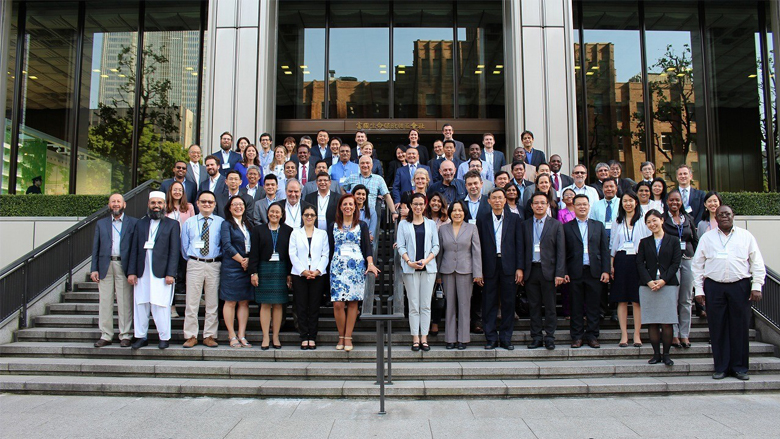Transport sector investments have been integral to World Bank’s partnerships with client countries. Since 2002, more than 260,000 kilometers of road have been constructed or rehabilitated by World Bank financed projects. Japan is a country with extensive and diverse transportation networks, and has a wealth of knowledge and experience on identifying and managing hazards that may degrade asset performance or interrupt network services. Beyond understanding the risk, they have developed various planning processes and technologies to manage, reduce, and transfer these risks. The TKX tapped into Japanese and other global expertise by inviting speakers to share their lessons learned and example programs in relation to each of the life-cycle phases.
A wide range of practitioners – including national and local governments, the private sector, academia, and civil society organizations – shared good practices and lessons learned on how they have increased the resilience of transport networks. Highlights from the event include:
- The Ministry of Land, Infrastructure, Transport and Tourism (MLIT) of Japan provided the overall institutional framework of DRM in the road sector in Japan and introduced the TEC-FORCE mechanism where the national government coordinates across regions to quickly deploy technical capacity for post disaster recovery. Nippon Expressway Company Limited (NEXCO) presented an advanced and unique model for how private highway companies can manage and operate resilient roads, and the technology and capacities put in place to respond to disasters.
- Representatives from the New Zealand Climate Adaptation Platform at University of Auckland shared research on decision making tools and building the business case for resilience, road operators approaches to improving resilience, and innovative materials and structures for flood vulnerability reduction of coastal roads.
- Each of the 16 participating countries presented a lightning talk on the disaster risks impacting their own transport sectors and the methods they employ to make them more resilient. This ultimately helped each country delegation develop action plans to address these challenges in their respective countries.
Introducing a New Tool for Multi-Dimensional Geohazard Risk Management
The TKX also served as a platform for the launch of the new Road Geohazard Risk Management Handbook developed by the DRM Hub, Tokyo. The tool was presented alongside case studies of its application across federal, state, and municipal levels in Brazil and Serbia. The handbook itself urges a shift away from traditional and reactive approaches towards a multi-dimensional geohazard risk management approach that incorporates people, the environment, hydrology, geology, as well as transportation infrastructure. This proactive methodology is three-fold – working through the steps of evaluating hazards, monitoring networks, and managing infrastructure accordingly – and can result in 60-70% life-cycle cost savings.
Going forward, the Resilient Transport CoP will continue to connect current and future World Bank transport investments with the information, tools, and technical expertise that exist in Japan and in many countries in the area of resilient transport.



